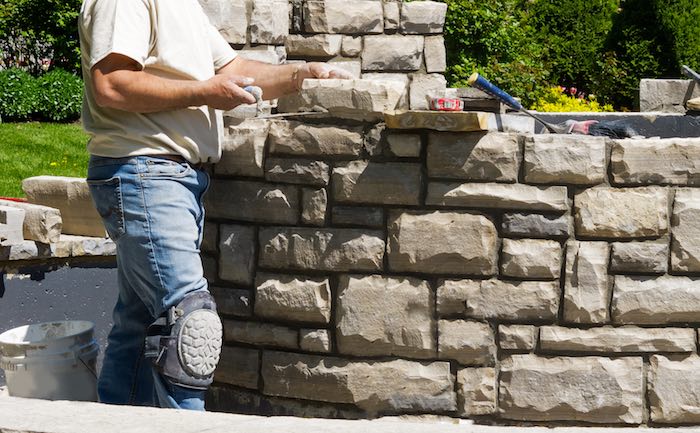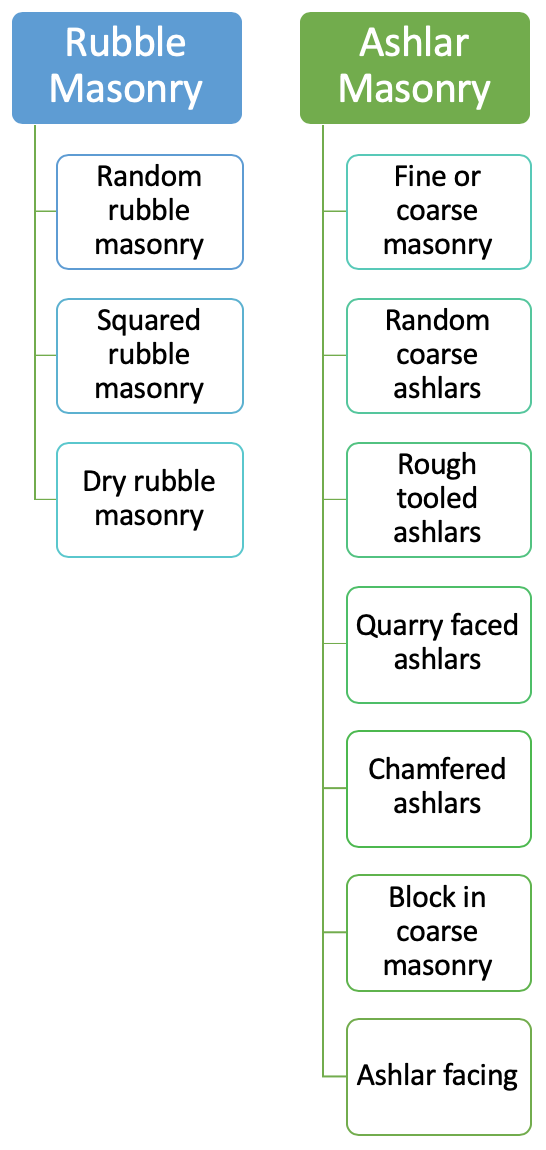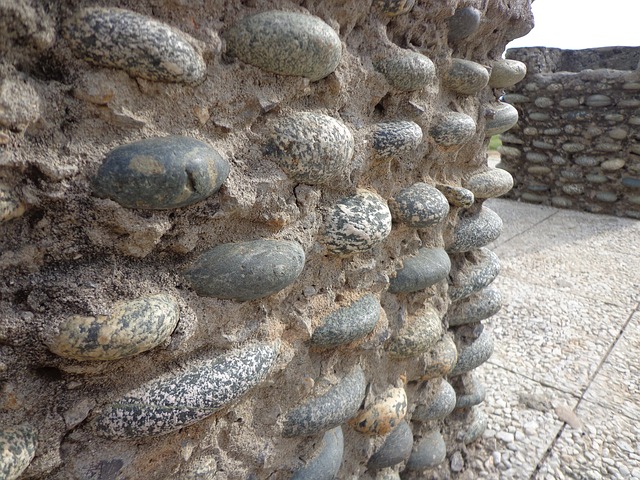Types of Stone Masonry - Rubble Masonry and Ashlar Masonry

Definition:
The art of building a structure in stone with any suitable masonry is called stone masonry. Following are the types of stone masonry
Types of Stone Masonry

Stone masonry can broadly be classified into the following two types:
- Rubble Masonry
- Ashlar Masonry
Rubble Masonry:
The type of stone masonry in which either undressed or roughly dressed stone are laid in a suitable mortar is called rubble masonry. In this masonry the joints are not of uniform thickness. Rubble masonry is further sub-divided into the following three types:
Types of Rubble Masonry
-
Random rubble masonry
-
Squared rubble masonry
-
Dry rubble masonry
Random rubble masonry:

Rubble masonry is the type of stone masonry in which either undressed or hammer dressed stones are used is called random rubble masonry. Further random rubble masonry is also divided into the following three types:
Un-coursed Random Rubble Masonry:
The random rubble masonry in which stones are laid without forming courses is known as un coursed random rubble masonry. This is the roughest and cheapest type of masonry and is of varying appearance. The stones used in this masonry are of different sizes and shapes. before lying, all projecting corners of stones are slightly knocked off. Vertical joints are not plumbed, joints are filled and flushed. Large stones are used at corners and at jambs to increase their strength. Once "through stone" is used for every square meter of the face area for joining faces and backing.
Applications of Random Rubble Masonry:
Used for construction of walls of low height in case of ordinary buildings.
Coursed Random Rubble Masonry:
The random rubble masonry in which stones are laid in layers of equal height is called random rubble masonry. In this masonry, the stones are laid in somewhat level courses. Headers of one coursed height are placed at certain intervals. The stones are hammer dressed.
Applications of Coursed Random Rubble Masonry:
CRRM is used for construction of residential buildings, go downs, boundary walls etc.
Squared Rubble Masonry:
The rubble masonry in which the face stones are squared on all joints and beds by hammer dressing or chisel dressing before their actual laying, is called squared rubble masonry.
There are two types of squared rubble masonry.
Coursed Square Rubble Masonry:
The square rubble masonry in which chisel dressed stones laid in courses is called coarse square rubble masonry. This is a superior variety of rubble masonry. It consists of stones, which are squared on all joints and laid in courses. The stones are to be laid in courses of equal layers. and the joints should also be uniform.
Applications of Coursed Square Rubble Masonry:
Used for construction of public buildings, hospitals, schools, markets, modern residential buildings etc and in hilly areas where good quality of stone is easily available.
Un coursed square rubble masonry:
The squared rubble in masonry which hammer dressed stones are laid without making courses is called un coursed square rubble masonry. It consists of stones which are squared on all joints and beds by hammer dressing. All the stones to be laid are of different sizes.
Suitability: Used for construction of ordinary buildings in hilly areas where a good variety of stones are cheaply available.
Dry rubble masonry:
The rubble masonry in which stones are laid without using any mortar is called dry rubble masonry or sometimes shortly as "dry stones". It is an ordinary masonry and is recommended for constructing walls of height not more than 6m. In case the height is more, three adjacent courses are laid in squared rubble masonry mortar at 3m intervals.
Ashlar Masonry:
It is the type of stone masonry in which finely dressed stones are laid in cement or lime mortar is known as ashlars masonry. In this masonry are the courses are of uniform height, all the joints are regular, thin and have uniform thickness. This type of masonry is much costly as it requires dressing of stones.
Suitability: This masonry is used for heavy structures, architectural buildings, high piers and abutments of bridges.
Ashlars masonry is further sub divided into the following types:
Types of Ashlar Masonry
- Ashlars fine or coarse ashlar masonry
- Random coarse ashlars masonry
- Rough tooled ashlar masonry
- Rock or quarry faced ashlars masonry
- Chamfered ashlars masonry
- Block in coarse masonry
- Ashlar facing
Ashlar fine or coursed ashlar masonry:
In this type of stone masonry stone blocks of same height in each course are used. Every stone is fine tooled on all sides. Thickness of mortar is uniform through out. It is an expensive type of stone masonry as it requires heavy labor and wastage of material while dressing. Satisfactory bond can be obtained in this type of stone masonry.
Random coursed ashlar masonry:
This type of ashlar masonry consists of fine or coursed ashlar but the courses are of varying thicknesses, depending upon the character of the building.
Rough tooled ashlar masonry:
This type of ashlar masonry the sides of the stones are rough tooled and dressed with chisels. Thickness of joints is uniform, which does not exceed 6mm.
Rock or quarry faced ashlar masonry:
This type of ashlar masonry is similar to rough tooled type except that there is chisel-drafted margin left rough on the face which is known as quarry faced.
Chamfered ashlar masonry:
It is similar to quarry faced except that the edges are beveled or chamfered to 450 for depth of 2.5 cm or more.
Block-in course masonry:
It is the name given to a class of ashlar masonry which occupies an intermediate place between rubble and ashlars. The stones are all squared and properly dressed. It resembles to coursed rubble masonry or rough tooled ashlar masonry.
Ashlar facing:
Ashlar facing is the best type of ashlars masonry. Since this is type of masonry is very expensive, it is not commonly used throughout the whole thickness of the wall, except in works of great importance and strength. For economy the facing are built in ashlars and the rest in rubble.












